El trastorno de estrés postraumático en niños preescolares: una revisión literaria
DOI:
https://doi.org/10.25057/25005731.732Palabras clave:
trastorno de estrés postraumático, niños preescolares, trauma y evaluaciónResumen
El desarrollo de psicopatologías en preescolares es un tema reciente de estudio. Varios grupos de investigadores se han tomado la tarea de investigar este fenómeno, y han encontrado interesantes hallazgos que dejan al manual diagnóstico y estadístico de los trastornos mentales (DSM) y a los instrumentos de media como inadecuados para valorar con precisión las psicopatologías presentes en la infancia temprana. Por esta razón, el DSM-5 trae consigo nuevos criterios diagnósticos pensados para niños menores de cinco años. El trastorno de estrés postraumático se caracteriza por aparecer posterior a la vivencia de acontecimientos estresantes. Los niños pre-escolares no son la excepción. El propósito de este escrito es realizar una actualización sobre los últimos hallazgos en la investigación del trastorno de estrés postraumático en niños preescolares. Al final del texto se lleva a cabo una reflexión sobre las implicaciones de estos descubrimientos en la clínica.
Referencias bibliográficas
Achenbach, T.M., & Rescorla, L. (2000). Child Behaviour Checklist for Ages 1½ - 5. Burlington. VT: University of Vermont.
Achenbach, T. M., & Edelbrock, C. (1983). Manual for the Child Behavior Checklist and Revised Child Behavior Profile. Burlington: University of Vermont, Department of Psychiatry.
American Psychiatric Association. (2013). Diagnostic and statistical manual of mental disorders (5th ed.). Washington, DC: American
Psychiatric Association (1980). Diagnostic and Statistical Manual of Mental Disorders. Tercera edición (DSM III). Washinton, DC: American Psychiatry Association.
American Psychiatric Association. (1994). Diagnostic and Statistical Manual of Mental Disorders. Cuarta edición (DSM IV). Washinton, DC: American Psychiatry Association.
American Psychiatric Association. (2001). Manual diagnóstico y estadístico de los trastornos mentales. DSM-IV TR. Barcelona: Masson.
Angold A., Prendergas M, Cox A., Harrington R., Simonogg E., Rutter M. (1995). The Child and Adolescent Psychiatric Assessment (CAPA). Department of Psychiatry, Duke University Medical Center, Durham, NC, Psychol Med., 25(4): 739-53.
Belden A., & Luby J. (2006). Preeschoolers´ Depresión Severity and Behaviors during dyadic interacitions: The mediating role of parental support. Journal of American Child and Adolescent Psychiatry, 45(2):213-22.
Briere, J., Jonson, K., Bissada, A., Damoon, L., Crouch, J., Gil, E. (2001). Trauma Symtom Checklist for Young Children (TSCYC) Reliability and association with abuse exposure in a multiñsite study. Children Abuse & Neglect, 25, p. 1001-1014.
Briggs-Gowan, M.J, Carter, A.S, Skuban, E.M, Horwitz, S.M. (2001). Prevalence of social-emotional and behavioral problems in a community sample of 1- and 2-year old children. Journal of the American Academy of Child and Adolescent Psychiatry, 40(7):811-9.
Briggs-Gowan, M.J, Owens, P., Schwab-Stone, M., Leventhal, J., Leaf, P.J, McCue, Horowitz, S. (2003). Persistence of psychiatric disorders in pediatric settings. Journal of the American Academy Child and Adolescent Psychiatry, 42(11), 1360–1369.
CIE 10. (1992). Trastornos mentales y del comportamiento. Descripciones clínicas y pautas para el diagnóstico. Organización Mundial de la Salud. (ICD-10, International Classification of Diseases, 10th revision). Madrid: Mediator.
Call J, Galenson E, Tyson RL. (Ed.). (1983). Frontiers of Infant Psychiatry. Vol. 1. New York: Basic Books.
Call J, Galenson E, Tyson RL. (Ed.). (1984). Frontiers of Infant Psychiatry. Vol. 2. New York: Basic Books.
Cuevas, M.C., & Castro, L. (2009). Efectos emocionales y conductuales de la exposición a violencia en niños y adolescentes en Colombia. Behavioral Psychology / Psicología Conductual, 17 (2), p. 277 - 297.
Chu, A. T., & Lieberman, A. (2010). Clinical implication of traumatic stress from birth to age five. The annual review of clinical psychology, 6, 469 - 494.
Denham S, Grout L (1993) Socialization of emotion: Pathway to preschoolers´emotional and social competence. Journal of Nonverbal Behavior, 17 (3), p. 205-227.
Diagnostic Classification of Mental Health and Developmental Disorders of Infancy and Early childhood (DC: 0-3) Zero to Three. (1994). Diagnostic Classification Task Force.
Dyregrov, A., & Yule, W. (2006). A review of PTSD in children. Child and Adolescent Mental Health, 11(4),176-84.
Egger, H.L., Angold, A. (2006a). Anxiety Disorders. In: Luby J. (Ed.). Handbook of preschool mental health: Development, disorders, and treatment (137–164). New York: Guilford Press.
Egger HL, Angold A. (2006b). Common emotional and behavioral disorders in preschool children: Presentation, nosology, and epidemiology. Journal of Child Psychiatry and Psychology, 47(3/4), p. 313–337.
Egger HL, Erkanli A, Keeler G, Potts E, Walter B, Angold A. (2006c). The test-retest reliability of the Preschool Age Psychiatric Assessment (PAPA) Journal of the American Academy of Child and Adolescent Psychiatry, 45(5), p. 538–549.
Egger, H., Ascher, B., & Angold, A. (1999). Preschool Aged Psychiatric. Assessment-Parent Interview. Unpublished manuscript, Center for Developmental Epidemiology, Department of Psychiatry and Behavioral Sciences, Duke University Medical Center, Durham, NC.
Eisen, M.L. (1997). The development and validation of a new measure of PTSD for Unpublished manuscript, California State University, Los Angeles.
Eisenberg N, Fabes R, Carlo G, Troyer D, Speer A, Karbon M, & Switzer G. (1992). The relations of maternal practice and characteristics to children´s vicarious emotional responsiveness. Child Development, 63(3), 583-602.
Fraiberg S. (Ed.). (1980). Clinical Studies in Infant Mental Health. New York: Basic Books.
Gunnar, M.R, & Quevedo, K. (2007). The neurobiology of stress and development. Annu. Rev. Psychol. 58, p. 145–73.
Keenan, K., Shaw, D.S., Walsh, B., Delliquadri, E., Giovannelli, J. (1980). DSM-III-R Disorders in preschool children from low-income familiesx Journal of the American Academy of Child and Adolescent Psychiatry, 36(5), 620- 637.
Laor, N., Wolmer, L., & Cohen, DJ. (2001). Mothers functioning and children’s symptoms in preschool-age children exposed to domestic violence. Journal of interpersonal Violence. 158(7), 1020 - 1036.
Lavigne, J.V, Arend, R., Rosenbaum, D., Binns, H.J., Christoffel, K.K., Gibbons, R.D. (1998). Psychiatric disorders with onset in the preschool years: I. Stability of diagnoses. Journal of the American Academy of Child and Adolescent Psychiatry. 37(12), 1246 - 1254.
Lieberman, A.F., Van Horn, P., & Ozer, E. (2005). Preschooler witnesses of marital violence: predictors and mediators of child behavior problems. Dev. Psychopathol. 17(2), 385 - 396.
Linares, L. O, Heeren, T., Bronfman, E., Zuckerman, B., Augustyn, M., Tronick, E. (2001). A mediational model for the impact of exposure to community violence on early child behavior problems. Child Dev. 72(2), 639 - 652.
Lynch, M., & Cicchetti, D. (1998). An ecological-transactional analysis of children and contexts: the longitudinal interplay among child maltreatment, community violence, and children’s symptomatology. Dev. Psychopathol, 10(2), 235 - 257
Minde K, & Minde R. (1986). Infant Psychiatry: An introductory textbook. Beverly Hills, CA: Sage.
Peebles C. (1997). The infant and preschool psychiatry clinic: A model of evaluation and treatment. Infant Mental Health Journal. 18(2) p. 221-229.
Pynoos, R., & Nader, K. (1986). Witness to violence: Child interview. Journal of the American Academy of child Psychiatry, 25(3), 306-319.
Quota, S., Punamaki, R., El Sarraj. E (2003). Prevalence and determinants of PTSD among Palestinian Children Exponed to Military Violence. European Child and Adolescent Psychiatry, 12(6), p. 265-272.
Research Diagnostic Criteria -Preschool Age (RDC-PA). (August 17, 2002). (No publicado).
Rexford E, Sander L, Shapiro T. Infant Psychiatry. (1976). A New Synthesis. New Haven: Yale University Press.
Romero-Acosta, K. (2014). La comorbilidad de síntomas ansiosos y depresivos en la niñez. Nuevas directrices de investigación. Revista de Psicología Gepu, 5(2), p. 15 – 31.
Scheeringa, M. S., Zeanah, C.H., & Myers, L. (2004). Heart period and variability findings in preschool children with posttraumatic stress symptoms. Biological Psychiatry, 55(7), p. 685-691.
Scheeringa, M. S., Zeanah, C. H., & Myers, L. (2003). New findings on alternative criteria for PTSD in preschool children. Journal of the American Academy of Child & Adolescent Psychiatry, 42(5), p. 561-570.
Scheeringa, MS., Zeanah, C.H., Myers, L., & Putnam, F.W. (2005). Predictive validity in a prospective follow-up of PTSD in preschool children. Journal of the American Academy of Child and Adolescent Psychitry, 44(9), p. 889-906.
Scheeringa MS, Zeanah CH, Myers L, Putnam FW. (2002). Heart rate and RSA reactivity in traumatized preschool children. Symposium presented at the International Society for Traumatic Stress Studies 18th Annual Meeting, Baltimore, MD.
Scheeringa, M.S., Peebles, C.D., Cook, C.A., & Zeanah,C.H. (2001). Toward Establishing procedural, criterion and discriminant validity for PTSD in early childhood. Journal of the American Academy of Child and Adolescent Psychiatry, 40(1), p. 52-60.
Scheeringa MS, Zeanah CH, Drell MJ, Larrieu JA. (1995). Two approaches to the diagnosis of posttraumatic stress disorder in infancy and early childhood. Journal of the American Academy of Child & Adolescent Psychiatry, 34(2), p. 191-200.
Scheeringa, M.S., & Zeanah, C.H. (1994). PTSD Semi-Structured interview and Observational Record gorInfants and Young Children. New Orleans, LA, Department of Psychiary and Neurology, Tulane University Health Sciences Center.
Stover C., Berkowits S. (2005). Assessing Violence Exposure and Trauma Symptom in Young Children: A Critical Review of Mesures. Journal of Traumatic Stress, 18(6), p. 7007 – 717.
Stoddard FJ., Saxe G., Ronfeldt H., Drake JE., Burns J., Edgren C., Sheridan R. (2006). Acute Stress Symptoms in young children with burns. Journal of American Academy of Child and Adolescent Psychiatry. 45(1) p. 87-93.
Yule, W & William, R., (1990). Posttraumatic Stress Reaction in Children. Journal of Traumatic Stress, 3(2), p. 279 – 295.
World Health Organization. (1992). International Classification of Diseases and related health problems. Decimal version, Geneva.
Cómo citar
Descargas
Lenguajes:
esDescargas
Publicado
Número
Sección
Licencia
Las opiniones contenidas en los artículos son responsabilidad de sus autores.
Katharsis autoriza la reproducción de los artículos siempre y cuando se mencione la fuente.
| Estadísticas de artículo | |
|---|---|
| Vistas de resúmenes | |
| Vistas de PDF | |
| Descargas de PDF | |
| Vistas de HTML | |
| Otras vistas | |




